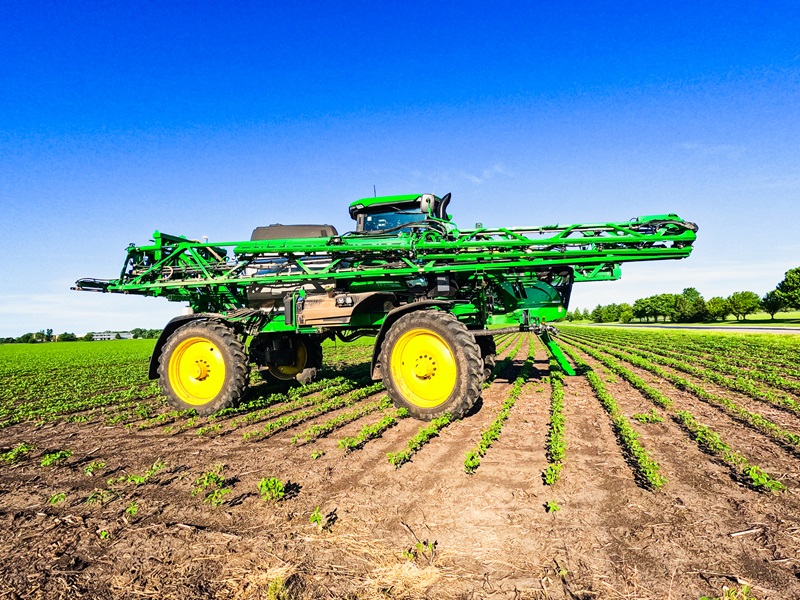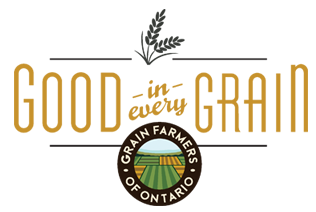Why and how do farmers spray their crops?
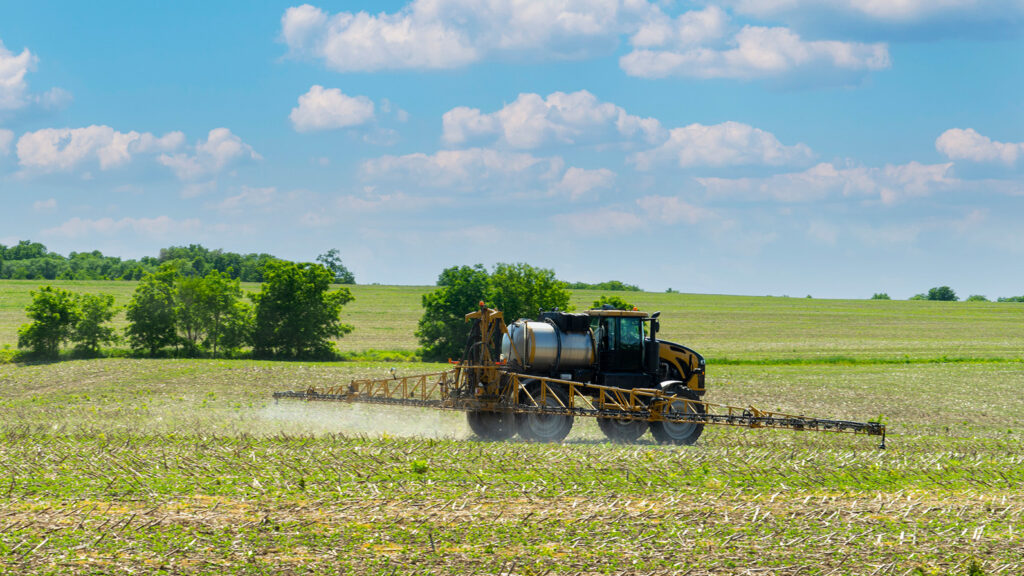
Agricultural sprayers are now a vital part of crop production for many grain farmers. These machines play an essential role in helping grains grow strong and healthy—by delivering fertilizers and protecting plants from insects, weeds, and diseases by applying a pesticide.
As the growing season progresses, sprayers give farmers a reliable way to apply treatments across their fields, in a precise and accurate way.
Why do farmers spray their crops?
Growing grains comes with many challenges; things like insects, weeds, diseases, and nutrient deficiencies can all reduce a grain’s growth potential and quality. Sprayers are machines that help farmers respond quickly and effectively to those challenges.
Sprayers are used to apply:
- Liquid fertilizers – nutrients delivered directly to the growing plants.
- Insecticides – to protect against damaging insects.
- Herbicides – to control weeds competing with grains for water and nutrients.
- Fungicides – to prevent or manage diseases like rust or mildew.
These applications support healthy crops and give farmers the best chance for a productive harvest. Before spraying, Ontario farmers will evaluate the need for a fertilizer or pesticide – does the field need a nutrient? Are there high levels of a damaging insect, or a weed threat? Is there evidence of a disease that will reduce quality in the field or destroy the whole crop? There are many decisions that go into growing a grain crop, and farmers will examine their grain fields to decide on the best solution if there is a problem during the growing season. Often times, using a sprayer to apply a fertilizer or pesticide is one of the solutions a farmer may choose.
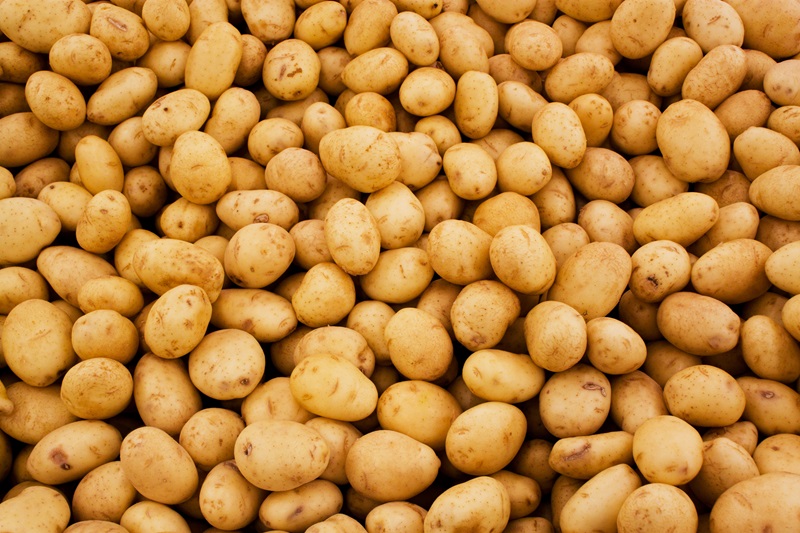
Did you know? Without pesticides to control late blight (the disease responsible for the Irish potato famine that killed almost a million people), today’s farmers would lose approximately 60 per cent of their potato crops. Canada now boasts a billion-dollar potato industry and pesticides play an important role in protecting the crop against a disease like blight.
How do farmers spray their crops?
Sprayers come in many shapes and sizes, depending on the size of the farm, the crop being grown, and the farmer’s budget. Commonly seen, is the large, manual driven machine called a sprayer. It has a large holding tank and long “booms” that fold out across large area of field. These booms carry the hoses and nozzles that apply the liquid spray while it drives across the field. Nozzles can be adjusted or changed out as they are designed for specific uses and the nozzle type affects how the spray is distributed.
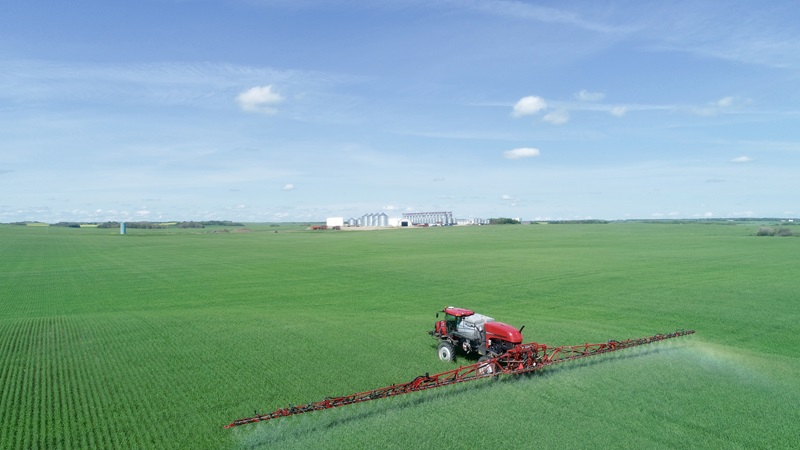
Other sprayers include ones that are trailer or mounted ones that are attached to tractors. They have the same concept as the manual driven sprayer but are pulled behind a tractor instead of being a self driven machine.
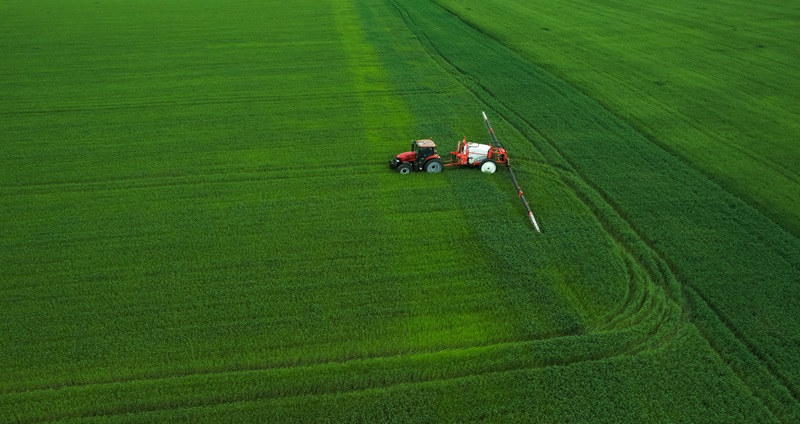
Lastly, there is research into applying fertilizers or pesticides by air through helicopters or drones! There is work to be done on the effectiveness and safety of this practise, but currently in Ontario, there are no approved pesticides that can be applied via a drone. Pesticides in Canada are regulated by Pest Management Regulatory Agency to ensure their safety and effectiveness, and farmers follow their regulations when applying a spray product.

Every farm is unique, so choosing the right sprayer depends on several factors: size of farm and grain type, the farmer’s budget and equipment availability, and lastly their spraying goals – are they targeting pests, weeds, disease, or nutrient needs (or a combination of this list)? This will impact the type of sprayer they source, as well as how they spray their crop.
The role of technology
Today’s sprayers often include advanced technology like GPS mapping, automatic shutoffs, and spray rate controllers. These tools help improve accuracy of applying a spray product and reduce any over application of a fertilizer or pesticide on the fields. Reduce an over application can help protect neighbouring fields and reduce any misuse of the spray. Fertilizers and pesticides are also expensive so farmers only want to use what they need to in order to protect their growing grain crop – technology on sprayer machines helps them precisely apply what they need, where they need it, at the right time to be useful to the growing grain crop, and in the precise amounts the grain needs the spray product.
Good spraying is part of good farm management
Spraying is just one part of a larger system of responsible crop management. Ontario farmers use other tools and practices to protect their growing crops, and ensure they have the nutrients needed. Things like crop rotation, disease resistant seeds, soil testing and scouting their fields are all practices they use in combination with a sprayer to protect their grains and produce healthy, top quality grains.
